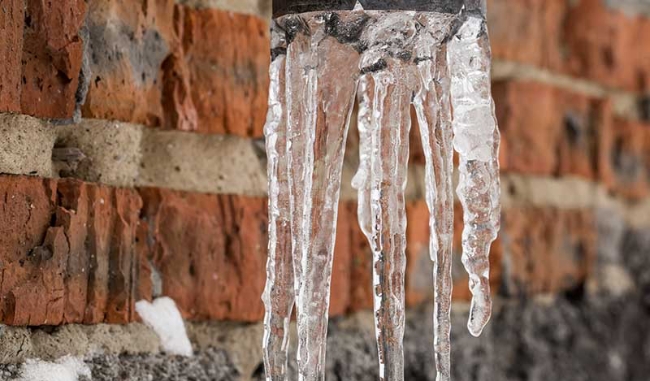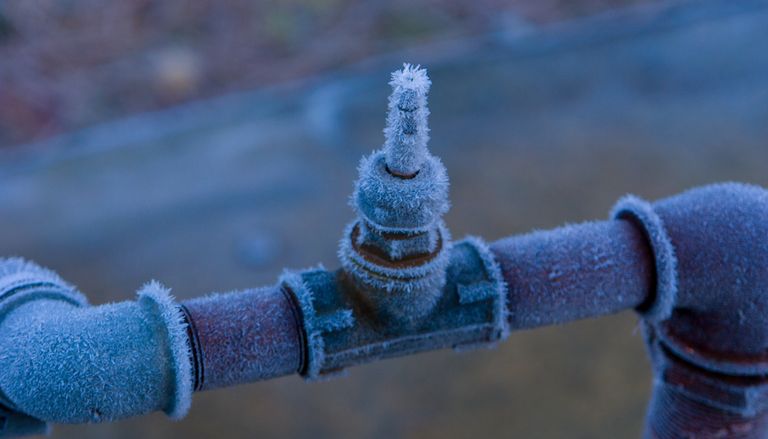Avoiding Your Pipes from Cold Weather: Effective Strategies
Avoiding Your Pipes from Cold Weather: Effective Strategies
Blog Article
The publisher is making several great pointers on Preventing and dealing with frozen pipes as a whole in this article following next.

Cold weather can damage your plumbing, specifically by freezing pipes. Below's exactly how to prevent it from occurring and what to do if it does.
Intro
As temperature levels drop, the threat of frozen pipelines increases, potentially causing pricey fixings and water damages. Recognizing exactly how to prevent icy pipelines is important for homeowners in chilly climates.
Recognizing Icy Pipelines
What causes pipes to ice up?
Pipelines ice up when subjected to temperature levels below 32 ° F (0 ° C) for expanded durations. As water inside the pipelines ices up, it expands, taxing the pipe walls and potentially creating them to break.
Risks and problems
Icy pipes can lead to water supply interruptions, residential or commercial property damages, and expensive fixings. Ruptured pipelines can flood homes and cause substantial structural damage.
Indicators of Frozen Water Lines
Identifying icy pipelines early can avoid them from rupturing.
Exactly how to recognize icy pipelines
Try to find decreased water circulation from taps, uncommon smells or noises from pipes, and visible frost on subjected pipelines.
Avoidance Tips
Shielding vulnerable pipes
Wrap pipes in insulation sleeves or make use of warm tape to protect them from freezing temperatures. Focus on pipelines in unheated or external areas of the home.
Heating techniques
Maintain indoor spaces properly warmed, particularly locations with plumbing. Open up cupboard doors to enable warm air to circulate around pipelines under sinks.
Protecting Outside Pipes
Garden pipes and outdoor taps
Detach and drain yard pipes before winter season. Install frost-proof faucets or cover exterior taps with shielded caps.
What to Do If Your Pipes Freeze
Immediate activities to take
If you believe icy pipelines, keep faucets open up to ease stress as the ice thaws. Make use of a hairdryer or towels taken in hot water to thaw pipelines gradually.
Long-Term Solutions
Architectural modifications
Think about rerouting pipelines far from outside wall surfaces or unheated locations. Include added insulation to attic rooms, basements, and crawl spaces.
Updating insulation
Buy premium insulation for pipes, attic rooms, and wall surfaces. Correct insulation aids maintain regular temperatures and minimizes the threat of icy pipelines.
Final thought
Avoiding frozen pipelines requires aggressive procedures and quick reactions. By understanding the causes, indications, and safety nets, house owners can shield their plumbing throughout cold weather.
5 Ways to Prevent Frozen Pipes
Drain Outdoor Faucets and Disconnect Hoses
First, close the shut-off valve that controls the flow of water in the pipe to your outdoor faucet. Then, head outside to disconnect and drain your hose and open the outdoor faucet to allow the water to completely drain out of the line. Turn off the faucet when done. Finally, head back to the shut-off valve and drain the remaining water inside the pipe into a bucket or container. Additionally, if you have a home irrigation system, you should consider hiring an expert to clear the system of water each year.
Insulate Pipes
One of the best and most cost-effective methods for preventing frozen water pipes is to wrap your pipes with insulation. This is especially important for areas in your home that aren’t exposed to heat, such as an attic. We suggest using foam sleeves, which can typically be found at your local hardware store.
Keep Heat Running at 65
Your pipes are located inside your walls, and the temperature there is much colder than the rest of the house. To prevent your pipes from freezing, The Insurance Information Institute suggests that you keep your home heated to at least 65 degrees, even when traveling. You may want to invest in smart devices that can keep an eye on the temperature in your home while you’re away.
Leave Water Dripping
Moving water — even a small trickle — can prevent ice from forming inside your pipes. When freezing temps are imminent, start a drip of water from all faucets that serve exposed pipes. Leaving a few faucets running will also help relieve pressure inside the pipes and help prevent a rupture if the water inside freezes.
Open Cupboard Doors
Warm your kitchen and bathroom pipes by opening cupboards and vanities. You should also leave your interior doors ajar to help warm air circulate evenly throughout your home.

I came across that post about How to prepare your home plumbing for winter weather when doing a search on the web. Are you aware of another person who is involved in Preventing and dealing with frozen pipes? Feel free to promote it. We love your readership.
Call Today Report this page